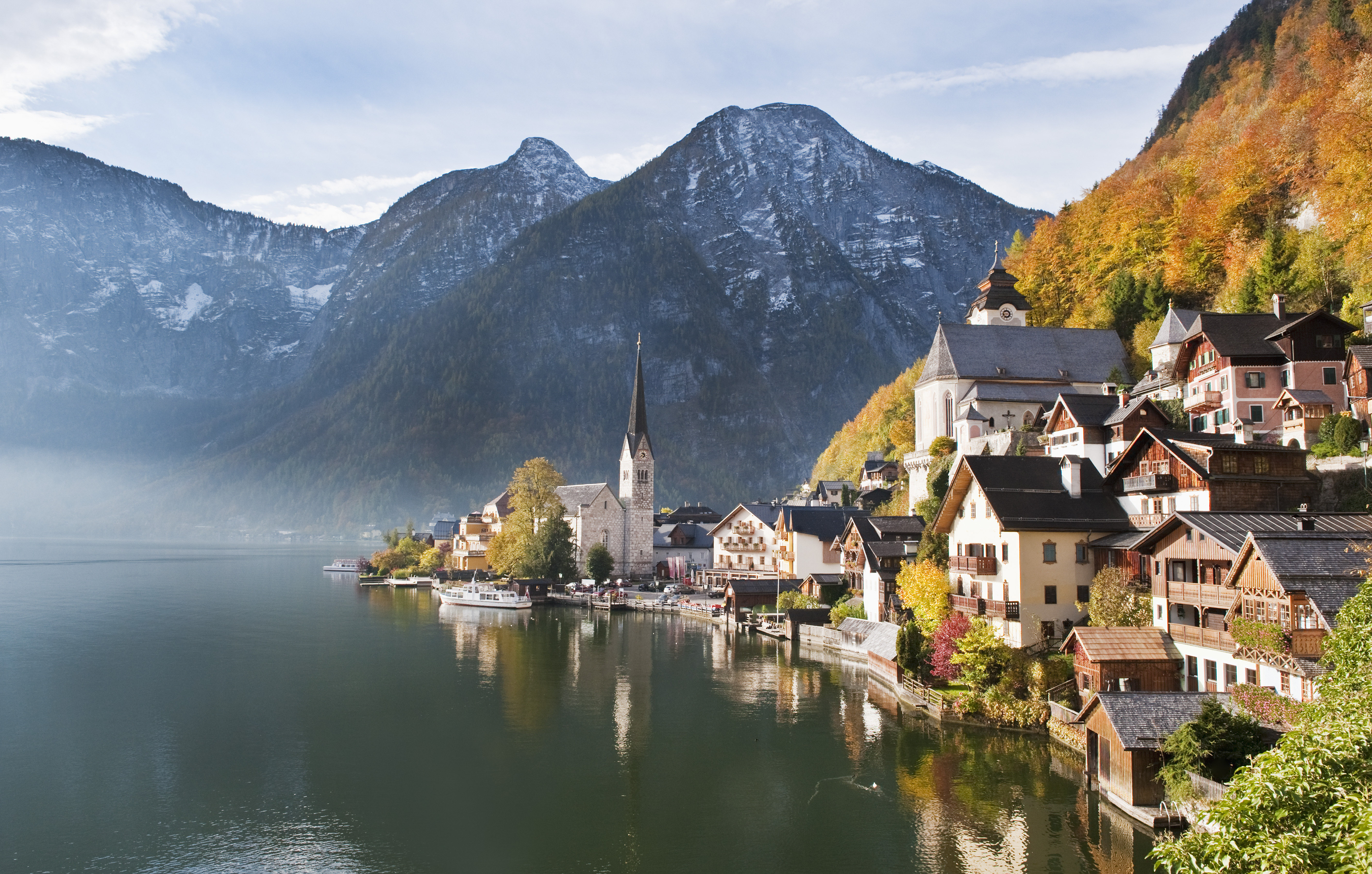
Cooler temps. Falling prices. Fewer crowds (off the beaten path, at least). Fall travel planning is upon us. Whether it’s your first foray into shoulder season travel, or you’re a prepared pro when it comes to all things autumn, here are five things you should know to make the most of your fall trip:
1. When and where everyone else is traveling
According to TripIt data, flight volumes will double this September: international flights will be up 100% from 2022; domestic flights will follow close behind with an increase of 98%. Friday, September 1—the start to Labor Day weekend—will be the busiest day for travel across the board. The first of the month will see the highest volume of international and domestic flights, rental car pick-ups, and check-ins to hotels and vacation rentals.
When it comes to international travel, September 1 and 2 are the busiest days for flying overseas. London is the top destination on both days, followed by cities like Paris, Rome, Athens, and Cancun.
As for domestic destinations, New York, Orlando, Las Vegas, and Chicago claim the top spots on the busiest hotel check-in days (September 1 and 8).
For vacation rental bookings, cities like Seattle, San Diego, Palm Springs, Houston, Fort Worth, and Flagstaff will see high check-in volume on the month’s busiest days (September 1 and 22).
Related reading: TripIt Data: Double the Americans to Fly Internationally This Shoulder Season
Why are these dates and destinations important to know? If you want to avoid crowds, experience a destination like a local, and be a more sustainable traveler, you’ll put off traveling to the above destinations—at least in the early part of the fall, and maybe altogether.
Places like London, Paris, and New York do tend to cool down as we head into the off season. Then again, there’s the case for avoiding tourist hot-spots as it’s better for the environment; I talk about this a bit further down.
2. How to prepare for weather
Researching the seasonal weather patterns (e.g., hurricane season) for your destination can help you make informed decisions as to where to travel this fall.
Meanwhile, extreme weather events like wildfires, severe heat waves, and floods are becoming more frequent, more intense, and more unprecedented—making weather-preparedness even more important when you’re planning and taking a trip.
TripIt now provides the weather forecast based on your trip itinerary to help you make more informed weather-related decisions before and during your trips.
With this new enhancement to the TripIt app, you can find weather forecasts on the plan details screen for plans with a single address/location. This includes lodging, restaurants, car rentals, and activities, such as concerts, meetings, theaters, tours, and more.
Read more: Prepare for Your Trip with TripIt’s IBM-Powered Weather Forecasts (Plus 4 More Tips)
“Travelers should always be aware of the weather-related risks for their destinations,” said Jen Moyse, Vice President of Product for TripIt. “TripIt now provides the weather forecast based on your trip itinerary. As your trip approaches, monitor the forecast to pack—and plan ahead—accordingly.”
3. How to gauge the level of safety at your destination
No matter where you’re traveling to this fall, doing research and being as informed as possible about what safety looks like at your destination(s) can help you enjoy your trip to the fullest.
TripIt’s Neighborhood Safety Scores will show you the level of safety for the neighborhoods you’re visiting. You can access hyperlocal safety ratings for myriad categories along any point within your TripIt itinerary for more than 65,000 cities and neighborhoods, including scores for overall safety, health and medical, physical harm, women’s safety, political freedoms, theft, and LGBTQ safety.
"Do your homework,” advised Michael Becker, CEO of GeoSure, which powers TripIt’s Neighborhood Safety Scores. “Know the safety of where your hotel is located and its immediate vicinity; know where—and how safe—the meeting locations in your TripIt itinerary are. Whether it’s work meetings, dinners, concerts or events, or something else—know the area and what safety looks like at those locations."
Know before you go: 8 Expert Tips for Staying Safe While Traveling
Be aware of the differences between safety during the day versus at night, as well. "Even if you're visiting a city or neighborhoods you know and have been to before—urban areas and neighborhoods can be dynamic, and levels of safety can vary by time of day,” added Michael.
Tip: In addition to hyperlocal ratings, Neighborhood Safety Scores show you separate scores for day and night.
4. How to be a more eco-friendly traveler
If you’re opting for an off-the-beaten-path destination, you’re taking a great first step in being a more eco-friendly traveler. Traveling to second cities or lesser-known destinations helps decrease the overall traffic to more popular cities that experience overtourism—i.e., when too many tourists visit a place and degrade the local experience.
Visiting alternate cities and destinations shares the wealth—both in terms of supporting local economies with tourist dollars, as well as limiting your environmental impact.
“Second-city tourism is not only better for the environment, it’s easier to get a sense of the place as a tourist, too,” said Kendyl Grender, budget-travel hacking coach. “Plus, shoulder season—the season sandwiched between high and low seasons—is a great time to travel. No matter where you go, it’s going to be a better travel experience.”
And once you’re on the ground at your destination, TripIt can help you make more eco-friendly choices, too. With TripIt’s Nearby Places feature, you can easily find places to eat, drink, pick up supplies, or even seek medical care close to where you’re staying.
For example, if you’re looking for a restaurant that’s within walking distance from your hotel, simply tap on the restaurants option in Nearby Places to view an interactive map with each option tagged. Tap the tags to view useful information like the restaurant’s contact details, hours, reviews, and more.
TripIt’s Map View feature is another way to discover what’s within walking distance from any location in your TripIt itinerary. Simply tap any pin on the map to see the plan in the carousel at the bottom of the screen, or swipe through the carousel to see the map for a particular plan to determine if walking—or walking to public transit—is feasible from your current location (or from any other plan in your trip).
5. How to handle travel disruptions
In a recent TripIt survey, 86% of respondents said recent headlines about travel chaos caused them to adjust their behavior in some way: nearly half (45%) said they now only book with brands they trust; 37% arrive at the airport earlier than ever before; and 34% avoid checking a bag.
“The travel industry is still experiencing labor shortages and flight crews, hotel staff, travel agents, and other service workers are doing the best they can,” said Jen. “Practicing patience and civility can help you (and fellow travelers) make the most of your trip—even if you do encounter disruptions. Plan ahead by packing an extra change of clothes, essential items or medications, device chargers, and snacks in your carry-on bag in case you experience delays.”
If you do experience travel disruptions, TripIt Pro’s Alternate Flights feature can help you figure out what your options are for getting on a different flight if yours is delayed or canceled.
Also, know your passenger rights. In some cases, you might be eligible for compensation. TripIt’s partner AirHelp, a company that specializes in helping air passengers claim compensation for eligible delayed, canceled, and overbooked flights to/from/within the European Union (EU) and Brazil, can help streamline the process for you.
Related reading: Canceled or Delayed Flight? TripIt Can Help with Compensation

